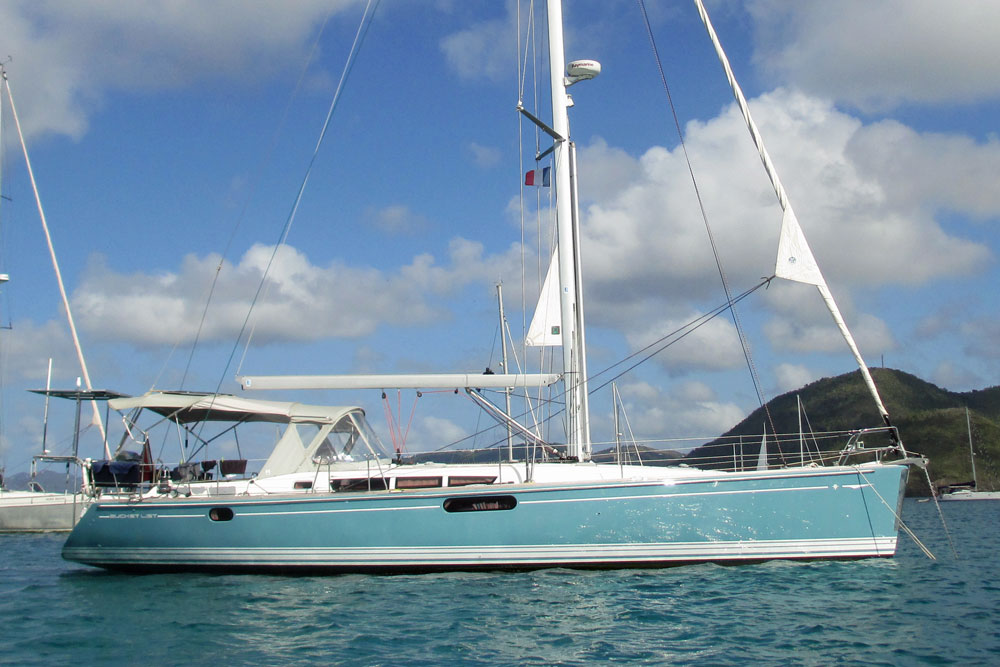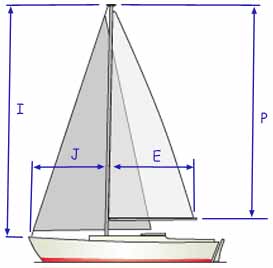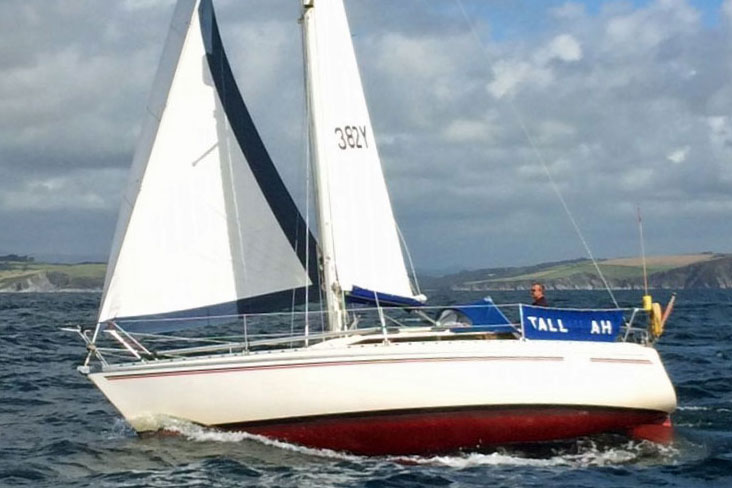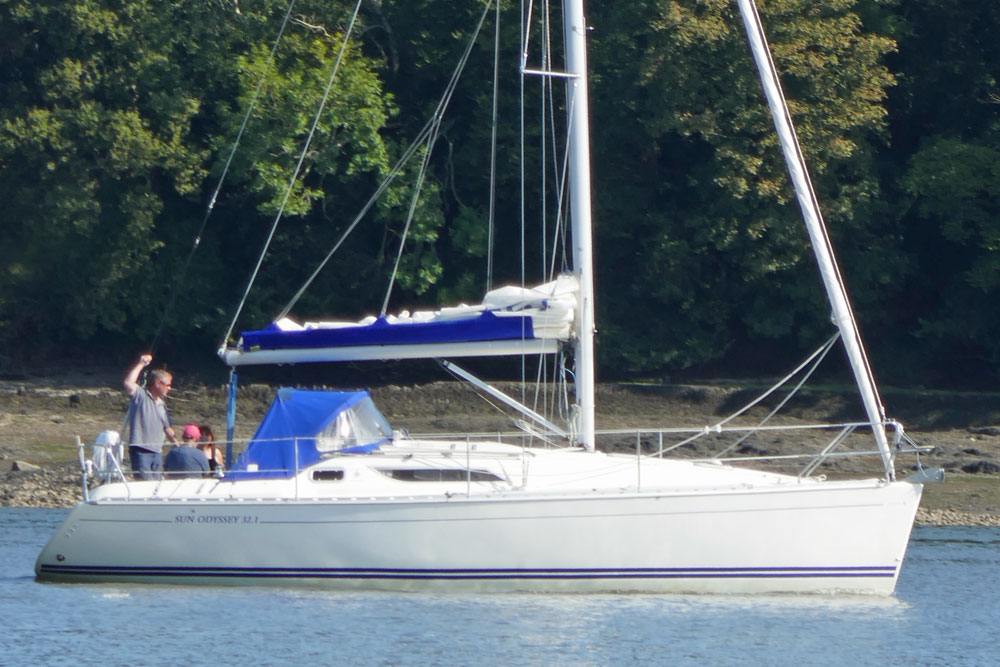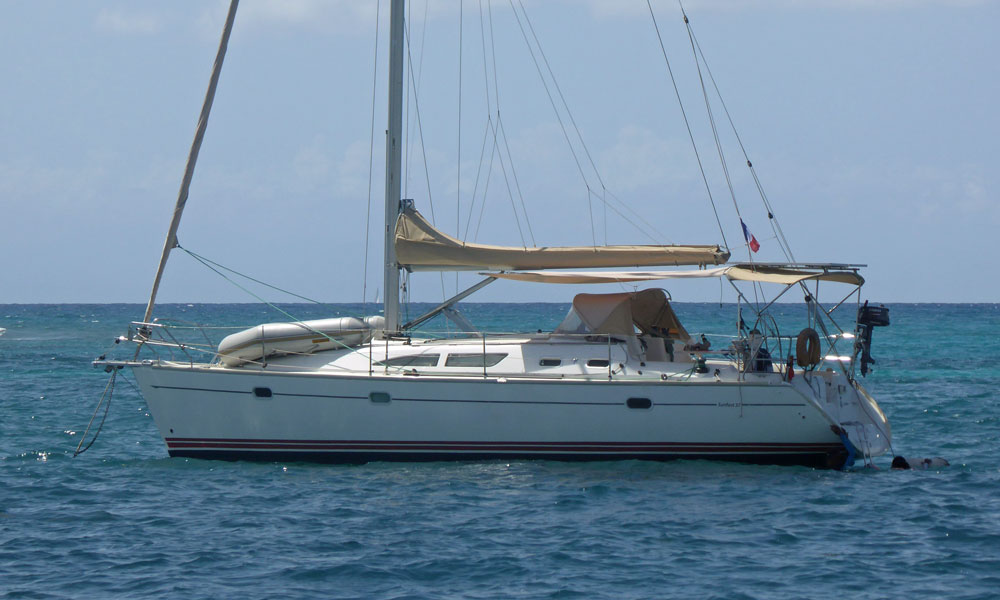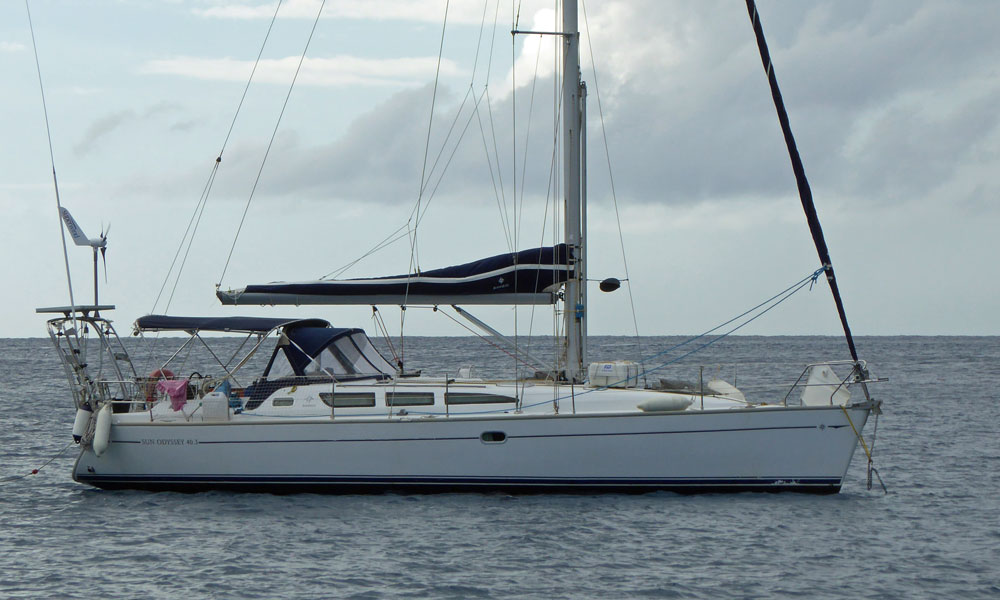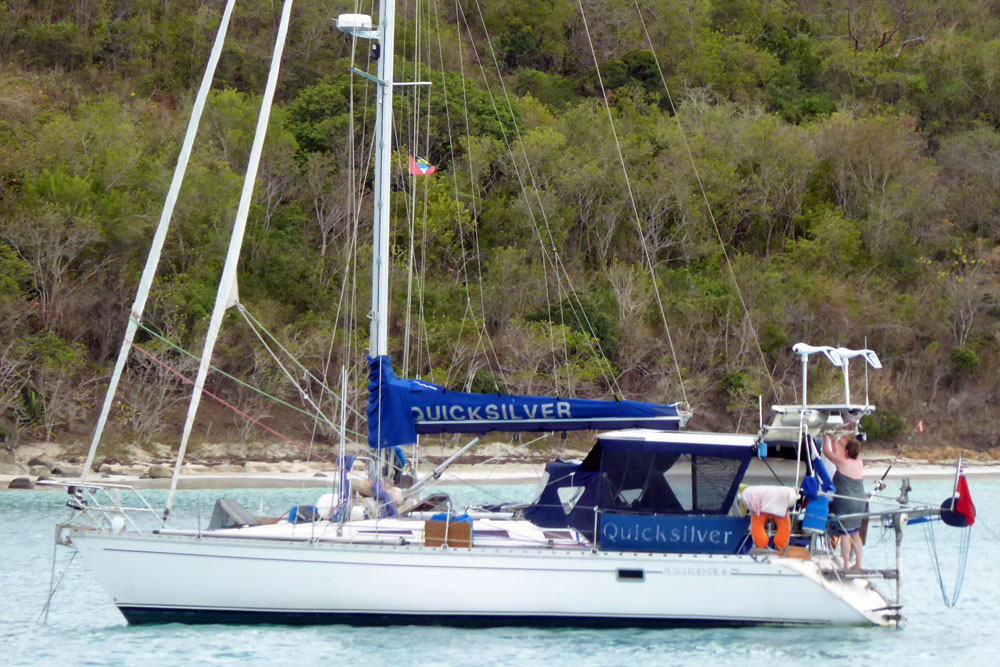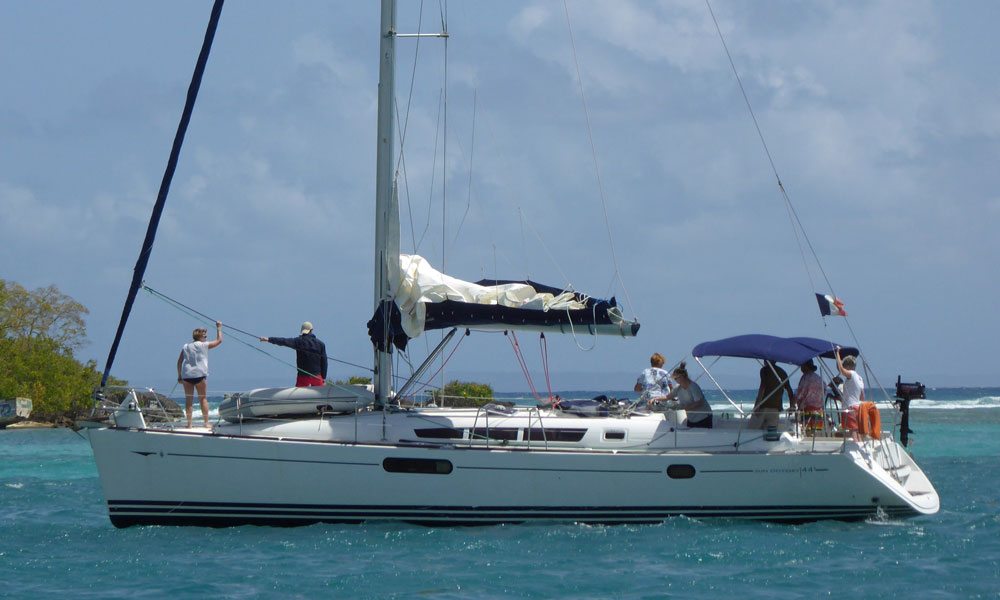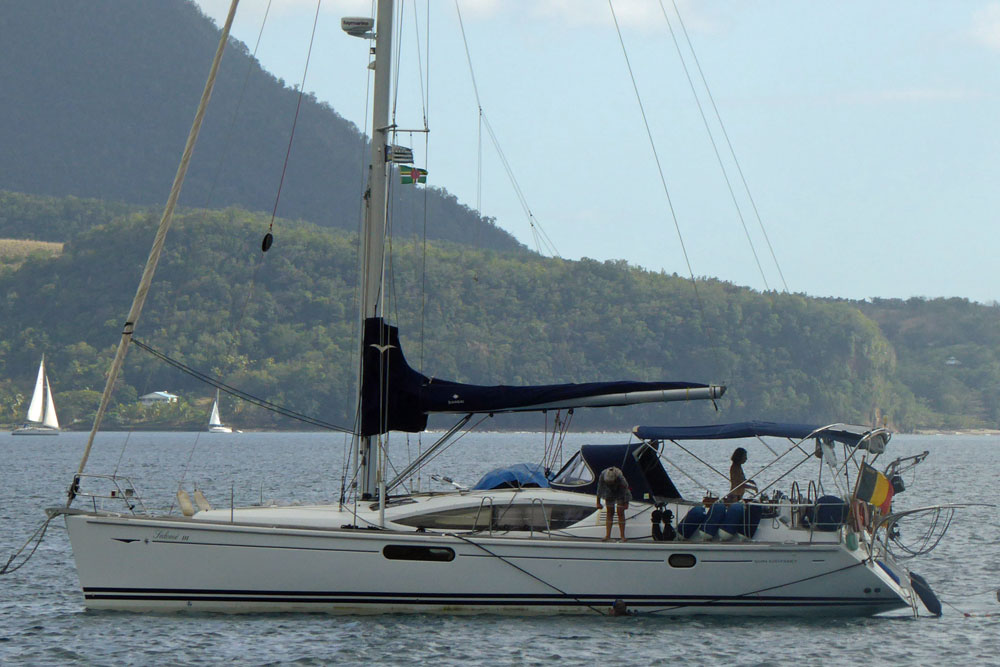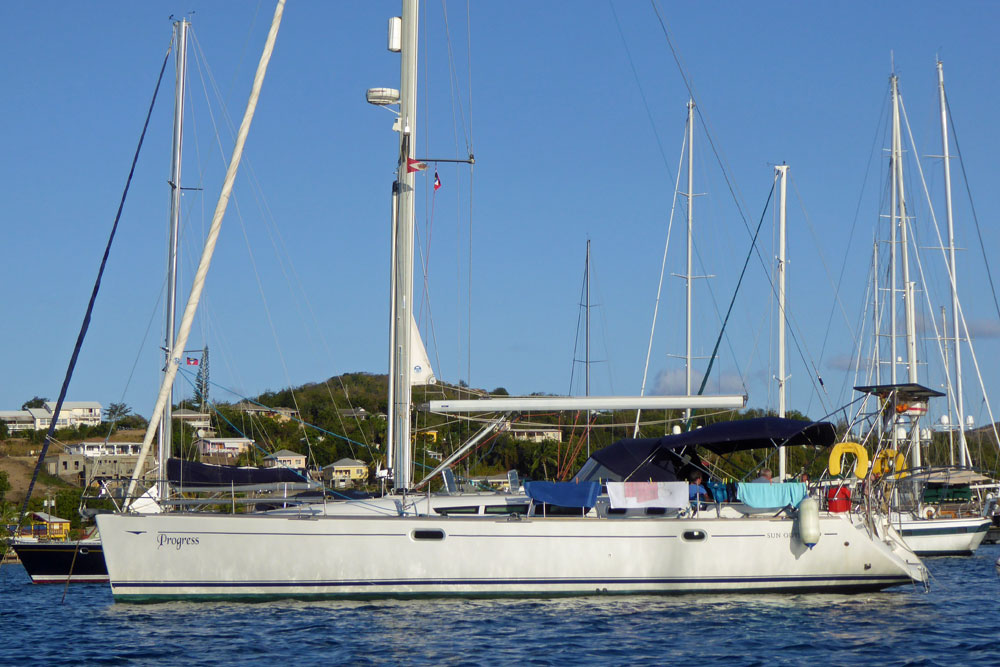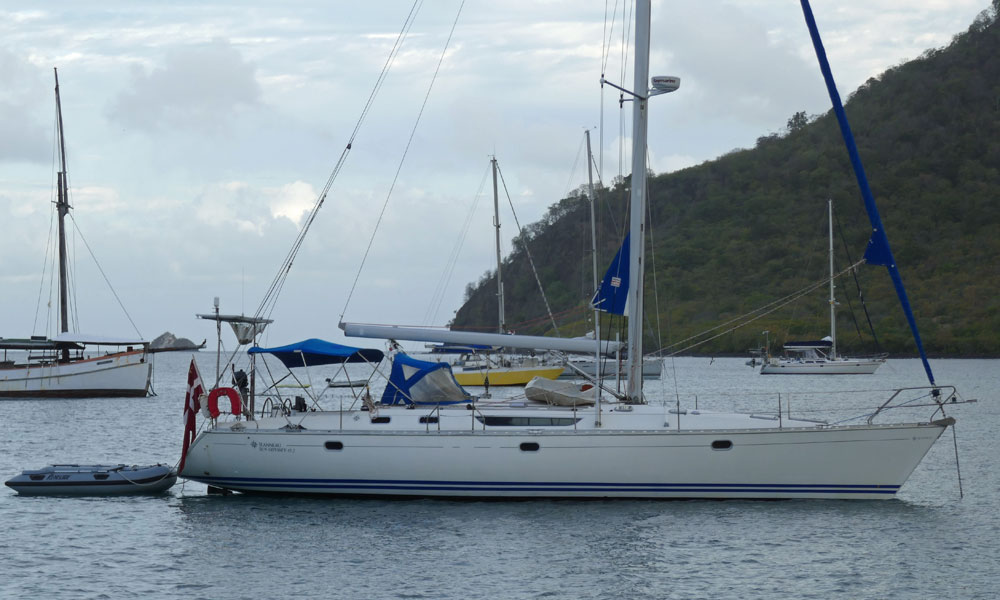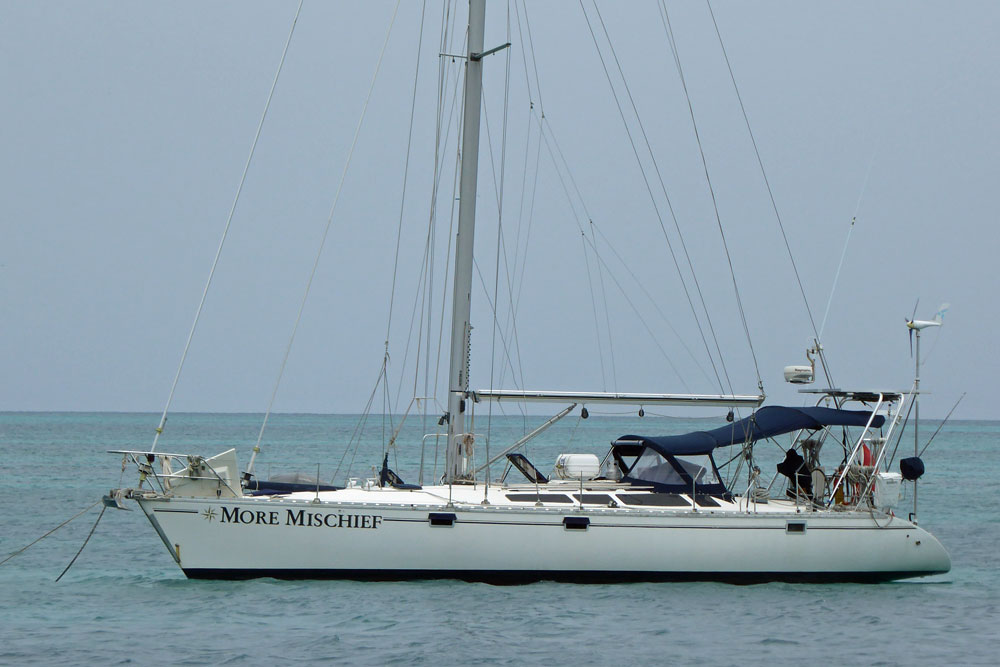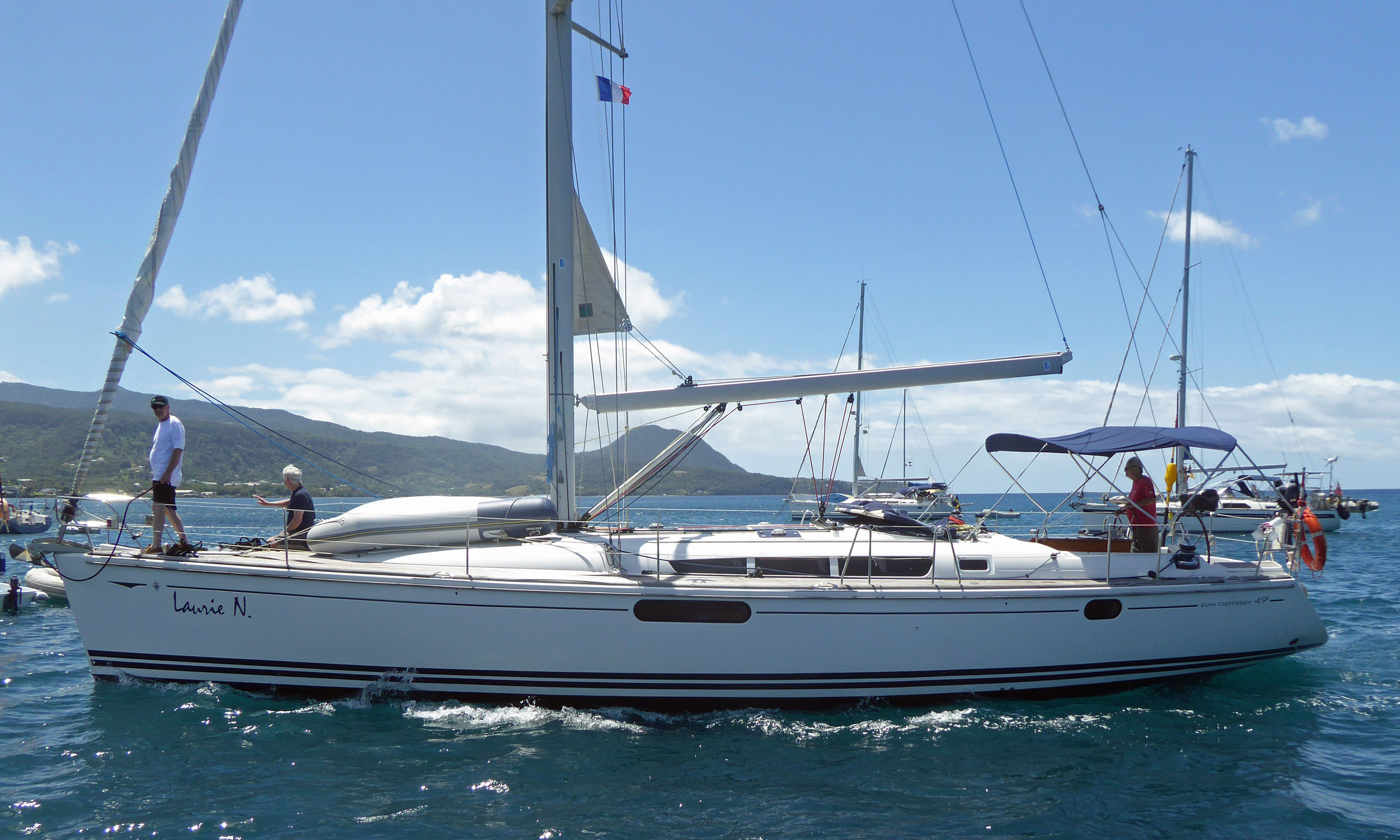- Home
- Cruising Yachts 45' to 50'
- Jeanneau Sun Odyssey 47
The Jeanneau Sun Odyssey 47 Sailboat
Specs & Key Performance Indicators
The Jeanneau Sun Odyssey 47, an aft cockpit masthead sloop, was designed by Philippe Briand and built in France by Jeanneau.
Published Specification for the Jeanneau Sun Odyssey 47
Keel & Rudder Configuration: Bulb-fin keel with spade rudder
Hull Material: Fiberglass with Kevlar reinforcement
Length Overall: 14.40m (47'3")
Waterline Length: 11.70m (38'5")
Beam: 4.45m (14'7")
Draft: 2.10m (6'11")
Rig Type: Masthead sloop
Displacement: 12,000 kg (26,455 lbs)
Ballast: 4,400 kg (9,700 lbs)
Water Tank Capacity: 580 liters (153 US gallons)
Fuel Tank Capacity: 210 liters (55 US gallons)
Hull Speed: 8.3 knots
Designer: Philippe Briand
Builder: Jeanneau
Year First Built: 1991
Year Last Built: Not specified
Number Built: 40
Options & Alternatives
There are two further versions of the Sun Odyssey 47:
- Sun Odyssey 47 CC (Center Cockpit): This version featured a centre cockpit layout, which provided a different deck and interior arrangement compared to the standard aft cockpit version. The centre cockpit design typically offered more privacy for the aft cabin and a different sailing experience.
- Sun Odyssey 47 DS (Deck Saloon): This version included a raised deck saloon, which provided more interior light and headroom, as well as improved visibility from the saloon area.
Sail Areas & Rig Dimensions
- I: 17.00m (55.77ft)
- J: 5.20m (17.06ft)
- P: 15.00m (49.21ft)
- E: 5.20m (17.06ft)
Total Sail Area: 112.0m² (1,205.6ft2)
Published Design Ratios
The Key Performance Indicators (KPIs)
- Sail Area/Displacement Ratio: 21.8
- Ballast/Displacement Ratio: 36.7
- Displacement/Length Ratio: 209
- Comfort Ratio: 28.0
- Capsize Screening Formula: 2.0
The following analysis of the primary design ratios gives an indication of the boat's likely sailing characteristics, but see the 'Notes of Caution' that follow below:
1. Sail Area/Displacement Ratio (21.8): This ratio indicates a relatively high-performance capability. The sailboat is expected to be quite powerful and capable of good performance, especially in moderate to strong winds.
2. Ballast/Displacement Ratio (36.7): While slightly below the 40 mark, this ratio suggests that the boat has a reasonable amount of stiffness and power to stand up to the wind. It should provide a stable and comfortable sailing experience, though not as stiff as boats with a higher ratio.
3. Displacement/Length Ratio (209): This places the boat in the moderate displacement category. It indicates that the Jeanneau Sun Odyssey 47 requires a moderate amount of sail area to reach its design hull speed, balancing performance and comfort.
4. Comfort Ratio (28.0): This ratio suggests a somewhat lively motion, typical of a coastal cruiser with moderate stability. It should provide a comfortable ride in coastal waters, though it may be more active in rougher seas compared to heavier bluewater cruisers.
5. Capsize Screening Formula (2.0): With a value of 2.0, the Jeanneau Sun Odyssey 47 is on the threshold for bluewater capability. This suggests that it is suitable for ocean passages, though it may not be as inherently stable as boats with a lower capsize screening value.
These ratios collectively indicate that the Jeanneau Sun Odyssey 47 is a well-rounded sailboat, offering a good balance of performance, stability, and comfort, suitable for both coastal cruising and some bluewater sailing.
Design Ratios: Notes of Caution...
- The Sail Area/Displacement Ratio (SA/D): This ratio provides an estimate of the sail power relative to the boat's weight, which can indicate potential speed in various wind conditions. But it doesn't account for the efficiency of the sail plan, the rigging, or the skill of the crew. Real-world performance can vary significantly based on these factors.
- The Ballast/Displacement Ratio (B/D): This ratio gives an idea of the boat's stability and stiffness, which is crucial for handling and safety. But it doesn't consider the distribution of the ballast or the hull shape, both of which can greatly affect stability. A high B/D ratio alone doesn't guarantee a stable boat if the ballast is poorly distributed.
- The Displacement/Length Ratio (D/L): This ratio helps predict the boat's speed potential and its behaviour in different sea conditions. But it doesn't account for the hull design or the boat's overall weight distribution. Two boats with the same D/L ratio can perform very differently if their hull shapes are different.
- The Comfort Ratio (CR): This ratio estimates the boat's motion comfort in a seaway, which is important for long passages. But it doesn't consider the boat's interior layout, which can also affect comfort. Additionally, personal tolerance to motion varies, so a boat that is comfortable for one person might not be for another.
- The Capsize Screening Formula (CSF): This formula assesses the likelihood of a boat capsizing in heavy seas, which is critical for offshore safety. But it doesn't take into account the boat's handling characteristics or the skill of the crew. A boat with a low CSF can still capsize if poorly handled in severe conditions.
General Limitations
- Static Nature: These ratios are static measurements and don't account for dynamic factors like wave action, wind gusts, or crew actions.
- Simplification: They simplify complex interactions into single numbers, which can be misleading. Real-world performance is influenced by a multitude of factors that these ratios can't fully capture.
- Context: The context in which the boat is used (e.g., coastal cruising vs. offshore racing) can greatly affect how these ratios should be interpreted.
In summary, while these ratios provide valuable insights into the theoretical performance characteristics of a sailboat, they should be used as part of a broader assessment that includes practical experience, sea trials, and expert advice.
The above text was drafted by sailboat-cruising.com using GPT-4 (OpenAI’s large-scale language-generation model) as a research assistant to develop source material; we believe it to be accurate to the best of our knowledge.
This article was written with the assistance of Gemini, a large language model developed by Google. Gemini was used to gather information, summarize research findings, and provide suggestions for the content and structure of the article.
Other sailboats in the Jeanneau range include:
Recent Articles
-
Is An SSB Marine Radio Installation Worth Having on Your Sailboat?
Apr 14, 25 02:31 PM
SSB marine radio is expensive to buy and install, but remains the bluewater sailors' favourite means of long-range communication, and here's why -
Correct VHF Radio Procedure: Your Questions Answered
Apr 14, 25 08:37 AM
Got a question about correct VHF radio procedure? Odds are you'll find your answer here... -
VHF Marine Radio; Which One is Right for Your Boat?
Apr 14, 25 05:09 AM
If you're looking to buy a VHF Marine Radio the choice can be a bit overwhelming. So what should it be, a fixed VHF or a handheld VHF? Maybe one with AIS or GPS built in perhaps?
